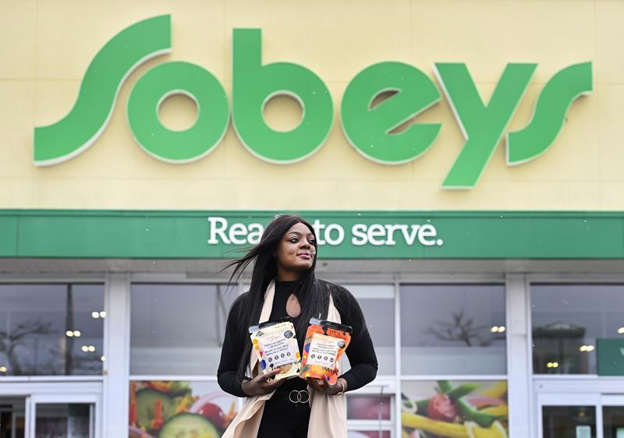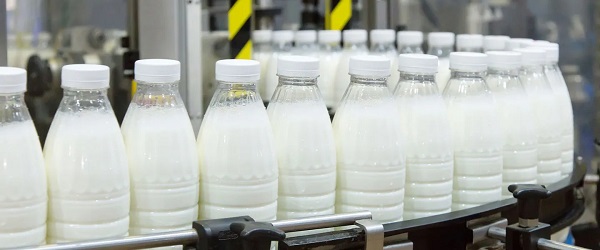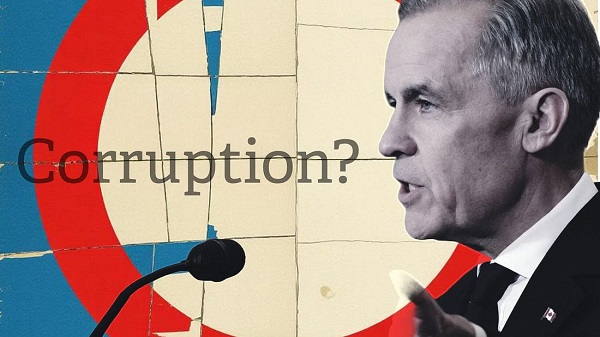Food
The Trudeau government’s latest assault on transparency is buried in Bill C-69

From the Macdonald Laurier Institute
By Aaron Wudrick for Inside Policy
The new powers granted to the minister of health under Bill C-69 are considerable. For example, they allow the minister to unilaterally make decisions regarding drug approvals and food safety regulations, effectively pulling products off the shelves of stores without the typical procedural safeguards. This concentration of power in the hands of the minister circumvents much-needed scrutiny and risks politicizing health decisions.
As the Trudeau government scrambles to pass its spring 2024 budget measures through Parliament before the summer recess, most of the media’s focus has centred on the budget’s headline measure, the increase in the capital gains inclusion rate. Unusually, Finance Minister Chrystia Freeland chose not to include that change in its main budget bill, saying she would instead soon introduce those measures in a separate bill.
Meanwhile, the remainder of the budget measures are contained in Bill C-69, an omnibus bill that has attracted little media attention. That is a shame, as it contains provisions that warrant closer scrutiny, particularly the proposed changes to the Food and Drug Act. These amendments grant the minister of health sweeping powers, exacerbating the Trudeau government’s longstanding habit of undermining proper procedural channels when it finds them to be inconvenient.
The new powers granted to the minister of health under Bill C-69 are considerable. For example, they allow the minister to unilaterally make decisions regarding drug approvals and food safety regulations, effectively pulling products off the shelves of stores without the typical procedural safeguards. This concentration of power in the hands of the minister circumvents much-needed scrutiny and risks politicizing health decisions. It is not hard to see how such authority could easily lead to arbitrary or politically motivated actions, further diminishing public trust in a health system battered by the COVID-19 pandemic.
Health Minister Mark Holland defends these new powers by arguing that they are necessary for protecting public health swiftly and effectively and suggests that only a “dishonest” minister would misuse such powers. He fails to mention that governance should not rely solely on the personal integrity of individual ministers but on robust, transparent processes that ensure accountability. It is concerning that Holland advocates bypassing established departmental procedures, which raises questions about the motivations behind these proposed changes.
A more appropriate regulatory approach would trust independent agencies, including Health Canada, to oversee the safety of health products. Establishing clear guidelines and procedures for evaluating and removing unsafe products would ensure consistency, fairness, and transparency in decision-making processes.
Unfortunately, this approach contrasts sharply with the Trudeau government’s preference for consolidating power and limiting oversight.
For instance, the Trudeau government has been criticized for its use of secret orders-in-council, which bypass public scrutiny and reduce transparency. These orders often contain sensitive decisions that the government simply prefers to keep out of the public eye.
The government has also allowed the federal access to information system to atrophy, with frequent delays and heavily redacted documents further undermining the principle of open government.
In 2017, the Trudeau government introduced changes that critics argued would limit the independence and effectiveness of the Parliamentary Budget Officer (PBO). These amendments allowed the government to control the PBO’s work plan and staffing, potentially reducing its ability to hold the government accountable. More recently, the government cut the budget of the Information Commissioner’s office, undermining the capacity of an already overwhelmed independent officer of Parliament to hold the government to account, with the commissioner herself noting that “this reduction in my budget will spell long delays for complainants who are seeking information from government institutions.”
Further examples of this troubling trend include the government’s proposal in the early days of the COVID-19 pandemic that sought to grant the government extraordinary powers to tax and spend unilaterally – without parliamentary approval – for almost two years. Later in the pandemic, the government faced significant criticism from Auditor General Karen Hogan for the lack of transparency and accountability regarding the allocation and spending of tens of billions in relief funds: “I am concerned about the lack of rigour on post-payment verifications and collection activities,” Hogan said in 2022.
Taken together, a clear pattern emerges of a government that regularly seeks to undermine transparency, limit oversight, and concentrate power within the executive branch, and Bill C-69 is just the latest attempt.
The government should back off and drop these proposed new unilateral ministerial powers. Strong regulatory oversight, coupled with transparency and accountability, won’t impair the government’s ability to regulate health products – all while safeguarding democratic principles and public trust.
Aaron Wudrick is the Director of the Domestic Policy Program at the Macdonald-Laurier Institute.
Business
Your $350 Grocery Question: Gouging or Economics?

Dr. Sylvain Charlebois, a visiting scholar at McGill University and perhaps better known as the Food Professor, has lamented a strange and growing trend among Canadians. It seems that large numbers of especially younger people would prefer a world where grocery chains and food producers operated as non-profits and, ideally, were owned by governments.
Sure, some of them have probably heard stories about the empty shelves and rationing in Soviet-era food stores. But that’s just because “real” communism has never been tried.
In a slightly different context, University of Toronto Professor Joseph Heath recently responded to an adjacent (and popular) belief that there’s no reason we can’t grow all our food in publicly-owned farms right on our city streets and parks:
“Unfortunately, they do have answers, and anyone who stops to think for a minute will know what they are. It’s not difficult to calculate the amount of agricultural land that is required to support the population of a large urban area (such as Tokyo, where Saitō lives). All of the farms in Japan combined produce only enough food to sustain 38% of the Japanese population. This is all so obvious that it feels stupid even to be pointing it out.”
Sure, food prices have been rising. Here’s a screenshot from Statistics Canada’s Consumer Price Index price trends page. As you can see, the 12-month percentage change of the food component of the CPI is currently at 3.4 percent. That’s kind of inseparable from inflation.

But it’s just possible that there’s more going on here than greedy corporate price gouging.
It should be obvious that grocery retailers are subject to volatile supply chain costs. According to Statistics Canada, as of June 2025, for example, the price of “livestock and animal products” had increased by 130 percent over their 2007 prices. And “crops” saw a 67 percent increase over that same period. Grocers also have to lay out for higher packaging material costs that include an extra 35 percent (since 2021) for “foam products for packaging” and 78 percent more for “paperboard containers”.
In the years since 2012, farmers themselves had to deal with 49 percent growth in “commercial seed and plant” prices, 46 percent increases in the cost of production insurance, and a near-tripling of the cost of live cattle.
So should we conclude that Big Grocery is basically an industry whose profits are held to a barely sustainable minimum by macro economic events far beyond their control? Well that’s pretty much what the Retail Council of Canada (RCC) claims. Back in 2023, Competition Bureau Canada published a lengthy response from the RCC to the consultation on the Market study of retail grocery.
The piece made a compelling argument that food sales deliver razor-thin profit margins which are balanced by the sale of more lucrative non-food products like cosmetics.
However, things may not be quite as simple as the RCC presents them. For instance:
- While it’s true that the large number of supermarket chains in Canada suggests there’s little concentration in the sector, the fact is that most independents buy their stock as wholesale from the largest companies.
- The report pointed to Costco and Walmart as proof that new competitors can easily enter the market, but those decades-old well-financed expansions prove little about the way the modern market works. And online grocery shopping in Canada is still far from established.
- Consolidated reporting methods would make it hard to substantiate some of the report’s claims of ultra-thin profit margins on food.
- The fact that grocers are passing on costs selectively through promotional strategies, private-label pricing, and shrinkflation adjustments suggests that they retain at least some control over their supplier costs.
- The claim that Canada’s food price inflation is more or less the same as in other peer countries was true in 2022. But we’ve since seen higher inflation here than, for instance, in the U.S.
Nevertheless, there’s vanishingly little evidence to support claims of outright price gouging. Rising supply chain costs are real and even high-end estimates of Loblaw, Metro, and Sobeys net profit margins are in the two to five percent range. That’s hardly robber baron territory.
What probably is happening is some opportunistic margin-taking through various selective pricing strategies. And at least some price collusion has been confirmed.
How much might such measures have cost the average Canadian family? A reasonable estimate places the figure at between $150 and $350 a year. That’s real money, but it’s hardly enough to justify gutting the entire free market in favor of some suicidal system of central planning and control.
Business
Canada’s ‘supply management’ system makes milk twice as expensive and favours affluent dairy farms

From the Fraser Institute
By Fred McMahon
While the Canada-U.S. trade negotiations continue, with much speculation about potential deals, one thing is certain: Canada’s agricultural marketing boards remain a barrier to success.
A White House official said as much: “[Canada] has repeatedly demonstrated a lack of seriousness in trade discussions as it relates to removing trade barriers.” That’s a clear reference to agricultural marketing boards, our Iron Curtain trade barrier. International trade lawyer Lawrence L. Herman aptly described boards as “Canada’s Soviet-style supply management system.”
Agricultural marketing boards are as Canadian as maple syrup, but more so. Maple syrup is international. Supply management is uniquely Canadian. No other country has such a system. And for good reason. It’s odious policy, favouring an affluent few, burdening the poorest, and creating needless friction with allies and trading partners.
President Trump’s distaste for the boards is well known. But, it’s not just Donald. The European Union, the United Kingdom, the World Trade Organization (effectively all of Canada’s trading partners)—and, wait for it, the majority Canadian farmers—all oppose the boards.
Canada claims to support free trade, except when we don’t. Canada seals off a large portion of its agricultural market with the system, but gets irritable when another country closes part of its market—say for autos, aluminum or steel.
Marketing boards employ a variety of tools, including quotas and tariffs, and a large bureaucracy to block international and interprovincial trade and deprive Canadians of choice in dairy, eggs and poultry. Without competition, productivity stagnates and prices soar.
The cost of living in the United States is 8.4 per cent higher than in the Canada, rent 14.9 per cent higher. But, thanks to our marketing boards, milk is twice as expensive—C$3.07 a litre on average in Canada versus C$1.47 in the United States. The most recent estimate of the cost of the system revealed, using 2015 data, that the average Canadian household pays an extra $300 to $433 annually because of marketing boards, hitting hard poorer Canadians, who spend a higher portion of their income on food than affluent Canadians.
Martha Hall Findlay, former Liberal MP and leadership contender, now director of the University of Calgary’s School of Public Policy, wrote with outrage, “The average Canadian dairy farm’s net worth is almost $4 million…. This archaic [supply-management] system forces a single mother on welfare to pay hundreds of dollars more per year than she needs to, just so we can continue to enrich a small number of cartel millionaires… members of the oft-vilified ‘one-percent’.”
Don’t expect meaningful negotiations. Canada’s Parliament, endorsed by the Senate, recently unanimously passed Bill C-202, which prohibits the foreign affairs minister from negotiating increased quotas or reduced tariffs for imports of supply-managed products.
The dairy industry, particularly in Quebec, is the big player. To protect this mighty lobby, Bloc Québécois Leader Yves-François Blanchet proposed C-202, backed by all parties, fearing a Quebec backlash if they stood up for Canadians, including for Quebecers who lack the privilege of owning one of province’s 4,200 multi-million-dollar dairy farms of Canada’s 9,400.
The Canadian Agri-Food Trade Alliance (CAFTA), Grain Growers of Canada (GGC), and other farm groups oppose C-202. Scott Hepworth, acting chair of GGC, said, “Parliament chose to prioritize one group of farmers over another. As a grain producer, I know firsthand how important international trade is to my family’s livelihood. Without reliable access to global markets, farmers like me are left behind.”
Canada has 65,000 grain farms and 53,000 pig and beef farms, compared to 14,700 supply-managed farms, less than one per cent of the total of 190,000 farms in Canada.
Marketing boards benefit a tiny minority of Canadian farmers while damaging the majority and increasing prices for all Canadians. One benefit of Donald Trump’s trade war against Canada has been the resolve on all levels of government to reduce home-grown obstacles to growth, including iron trade curtains between provinces.
The spineless response to C-202 reveals the weakness of that resolve and politician’s willingness to bend the knee to rich lobbies, toss other farmers under the bus, and carelessly pile on costs for Canadians, particularly low-income ones.
-

 Business1 day ago
Business1 day agoFederal Budget 2025: A responsible media would ensure Canadians know about the dismal state of federal finance
-

 Business1 day ago
Business1 day agoCanada has an energy edge, why won’t Ottawa use it?
-

 Business2 days ago
Business2 days agoCutting Red Tape Could Help Solve Canada’s Doctor Crisis
-

 International20 hours ago
International20 hours agoPoland’s president signs new zero income tax law for parents with two children
-

 Daily Caller2 days ago
Daily Caller2 days agoTrump, Putin Agree On High-Stakes Meetings To Negotiate End To Ukraine War
-

 Energy2 days ago
Energy2 days agoPrince Rupert as the Optimal Destination Port for an Alberta Crude Oil Pipeline –
-

 Automotive7 hours ago
Automotive7 hours ago$15 Billion, Zero Assurances: Stellantis Abandons Brampton as Trudeau-Era Green Deal Collapses
-

 Business1 day ago
Business1 day agoEthics on Ice: See You Next Year






